Stricture of intestine. Intestinal Strictures: Causes, Symptoms, and Treatment Options for Crohn’s Disease
What are the main types of intestinal strictures. How do inflammatory and fibrotic strictures differ. What symptoms indicate an intestinal stricture. Which treatment options are available for managing strictures in Crohn’s disease. How can diet and lifestyle changes help prevent stricture formation.
Understanding Intestinal Strictures: A Common Complication of Crohn’s Disease
Intestinal strictures represent a significant challenge for many individuals living with Crohn’s disease. These narrowed sections of the intestine can severely impact quality of life and require careful management. This comprehensive guide explores the nature of intestinal strictures, their causes, symptoms, and the various treatment options available to those affected by this condition.
Types of Intestinal Strictures: Inflammatory vs. Fibrotic
Intestinal strictures fall into two primary categories:
- Inflammatory strictures
- Fibrotic strictures
Understanding the difference between these types is crucial for determining the most effective treatment approach.

Inflammatory Strictures
Inflammatory strictures result from active inflammation in the intestinal wall. This swelling narrows the intestinal passage, impeding the flow of digestive contents. These strictures may respond well to anti-inflammatory medications and can potentially be reversed if treated promptly.
Fibrotic Strictures
Fibrotic strictures develop due to the accumulation of scar tissue in the intestinal wall. This scarring is a consequence of prolonged or recurrent inflammation. Unlike inflammatory strictures, fibrotic strictures are generally irreversible without surgical intervention.
Many patients with Crohn’s disease experience a combination of both inflammatory and fibrotic components in their strictures, complicating treatment decisions.
Causes and Risk Factors for Intestinal Strictures in Crohn’s Disease
Why do some individuals with Crohn’s disease develop strictures while others do not? Several factors contribute to stricture formation:
- Chronic inflammation of the intestinal wall
- Repeated cycles of tissue damage and healing
- Genetic predisposition
- Duration and severity of Crohn’s disease
- Location of inflammation (small intestine strictures are more common)
- Smoking
- Previous intestinal surgeries
Research indicates that approximately one-third of Crohn’s disease patients will develop a stricture within the first decade following diagnosis. This statistic underscores the importance of vigilant monitoring and proactive management strategies.
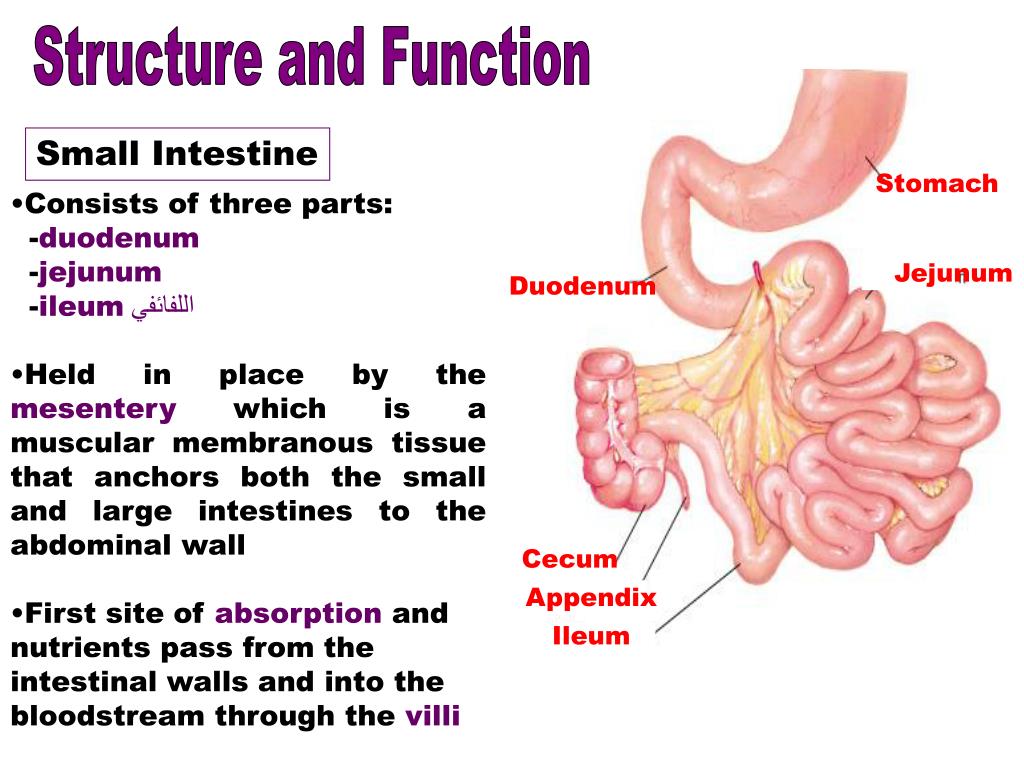
Recognizing the Symptoms of Intestinal Strictures
Identifying the signs of an intestinal stricture early can lead to more effective treatment outcomes. Common symptoms include:
- Abdominal pain and cramping
- Bloating and distension
- Nausea and vomiting
- Changes in bowel habits (constipation or diarrhea)
- Loud bowel sounds
- Loss of appetite
- Unexplained weight loss
In severe cases, a complete bowel obstruction may occur, necessitating immediate medical attention. This condition is characterized by intense abdominal pain, inability to pass gas or stool, and severe nausea and vomiting.
When Should You Seek Medical Attention?
If you experience persistent or worsening symptoms of intestinal strictures, it’s crucial to consult your healthcare provider promptly. Early intervention can prevent complications and may offer a broader range of treatment options.
Diagnostic Approaches for Intestinal Strictures
Accurate diagnosis of intestinal strictures is essential for developing an effective treatment plan. Healthcare providers employ various diagnostic tools and techniques:
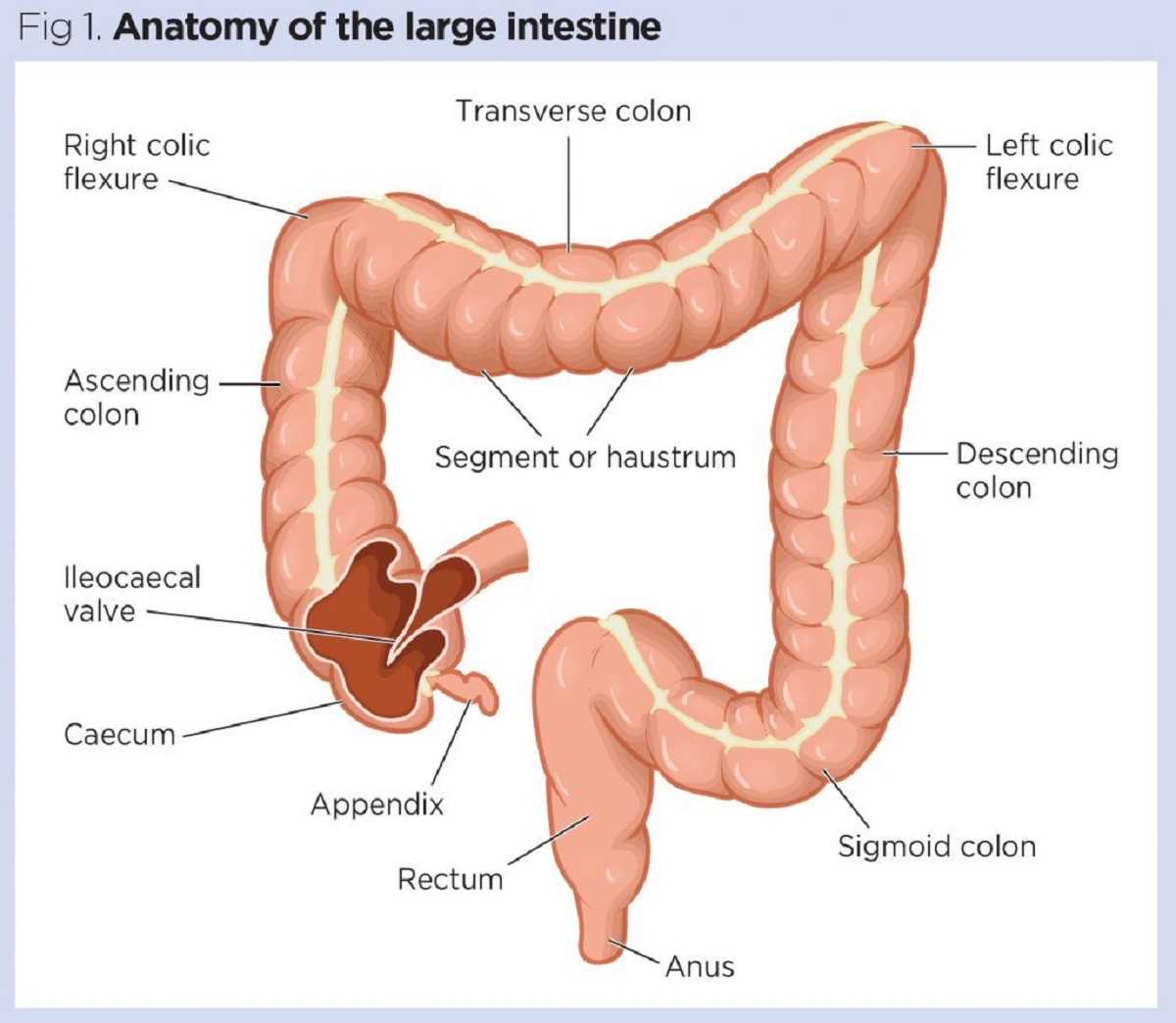
- Imaging studies (CT enterography, MR enterography)
- Endoscopic procedures (colonoscopy, capsule endoscopy)
- Contrast studies (small bowel follow-through)
- Ultrasound
These diagnostic methods help physicians determine the location, extent, and nature of the stricture, guiding treatment decisions.
Treatment Options for Intestinal Strictures in Crohn’s Disease
Managing intestinal strictures requires a multifaceted approach, often combining medical, endoscopic, and surgical interventions. The choice of treatment depends on various factors, including the type of stricture, its location, and the patient’s overall health status.
Medical Management
For inflammatory strictures, medical therapy aims to reduce inflammation and potentially reverse the narrowing. Treatment options include:
- Corticosteroids
- Immunomodulators
- Biologic therapies (anti-TNF agents, anti-integrin agents)
While these medications can be effective for inflammatory strictures, they typically have limited impact on fibrotic strictures.

Endoscopic Treatments
Endoscopic procedures offer minimally invasive options for managing some strictures:
- Balloon dilation: A small balloon is inflated within the stricture to widen the narrowed area.
- Stent placement: In some cases, a temporary stent may be placed to maintain the opening.
These techniques are most suitable for short, accessible strictures and may need to be repeated over time.
Surgical Interventions
When medical and endoscopic treatments are insufficient, surgery may be necessary. Surgical options include:
- Strictureplasty: This procedure widens the narrowed section without removing intestinal tissue.
- Resection: The affected portion of the intestine is removed and the healthy ends are reconnected.
The choice between these surgical approaches depends on the location and extent of the stricture, as well as the overall health of the surrounding intestinal tissue.
Lifestyle and Dietary Modifications for Managing Strictures
In addition to medical treatments, lifestyle and dietary changes can play a crucial role in managing intestinal strictures and preventing complications:

Dietary Adjustments
- Low-residue diet: Reducing fiber intake can help minimize the risk of bowel obstruction.
- Small, frequent meals: Eating smaller portions more frequently may ease digestive stress.
- Adequate hydration: Staying well-hydrated supports overall digestive health.
Lifestyle Considerations
- Smoking cessation: Quitting smoking can significantly improve Crohn’s disease outcomes and reduce stricture risk.
- Stress management: Chronic stress may exacerbate inflammation, so adopting stress-reduction techniques can be beneficial.
- Regular exercise: Moderate physical activity supports overall health and may help manage Crohn’s symptoms.
While these modifications can help manage symptoms and reduce the risk of complications, they should always be implemented under the guidance of a healthcare provider.
Preventing Stricture Formation in Crohn’s Disease
While it’s not always possible to prevent strictures, certain strategies may reduce the risk of their development:
- Adhering to prescribed medications to control inflammation
- Regular follow-ups with your gastroenterologist
- Monitoring for early signs of stricture formation
- Maintaining a healthy lifestyle
- Avoiding known trigger foods
Early intervention and consistent disease management are key to minimizing the risk of stricture formation and other Crohn’s-related complications.

Living with Intestinal Strictures: Long-term Management and Quality of Life
Coping with intestinal strictures requires ongoing attention and adaptability. Patients may need to:
- Work closely with their healthcare team to monitor disease progression
- Be prepared for potential hospitalizations or procedures
- Engage in support groups or counseling to address the emotional impact of living with a chronic condition
- Stay informed about new treatment options and research developments
With proper management and support, many individuals with Crohn’s disease and intestinal strictures can maintain a good quality of life and continue to pursue their personal and professional goals.
Intestinal strictures represent a significant challenge in the management of Crohn’s disease. Understanding the nature of these strictures, recognizing their symptoms, and exploring the available treatment options are crucial steps in effectively managing this condition. By working closely with healthcare providers and adopting appropriate lifestyle modifications, individuals with Crohn’s disease can navigate the complexities of intestinal strictures and maintain optimal digestive health.

As research in this field continues to advance, new treatment modalities and management strategies may emerge, offering hope for improved outcomes and quality of life for those affected by intestinal strictures in Crohn’s disease. Staying informed and engaged in one’s care remains paramount in successfully managing this challenging aspect of inflammatory bowel disease.
Colon Strictures: What to Know
Written by Alyson Powell Key
- Types and Causes
- Symptoms
- Treatments
Your body is like a network of highways, carrying food, fluids, and waste around and out. When certain sections of those roadways narrow because of disease or other reasons, it’s called a stricture.
When this roadblock happens in your large intestine, it’s called a colon stricture. Your large intestine, or bowel, is where your body converts digested food into poop. A colon stricture slows or stops that waste from passing through.
Strictures can happen in different parts of your body. They include the tube that carries food to your stomach (esophagus) and your urethra, which channels pee out of your body.
No matter the location, strictures come in two types. You could have one or the other, or both.
Inflammatory strictures result from swelling in your digestive tract. Doctors can treat them with medication or surgery.
Fibrotic strictures happen when scar tissue builds up in the bowel from chronic inflammation. They require surgery.
One main cause of colon strictures is inflammatory bowel diseases (IBDs) like Crohn’s disease and ulcerative colitis. A cycle of inflammation and healing leads to scar tissue that narrows the intestine. Other possible causes include:
- Bulging on the intestine wall (diverticulosis)
- Protruding colon tissue (hernia)
- Bacterial infection in the stomach
- Tumors
- Radiation
- Reduced blood flow (ischemia)
One in two adults with Crohn’s disease may get intestine problems like fistulas (sores) or strictures within 20 years of their diagnosis.
Some signs of strictures can feel vague. Other times, the symptoms may be more obvious. Your colon’s job is to process digested food and liquids and push the waste down to your rectum to be eliminated as stool. A serious stricture can block your bowels and make it hard for you to poop.
Symptoms of a colon stricture may include if you:
- Are nauseated or feel sick to your stomach
- Throw up
- Have stomach cramping, pain, or bloating
- Are constipated
- Have diarrhea
- Notice swelling
- Lose your appetite
- Feel tired
If you don’t treat it early, a stricture can turn deadly.
Lifestyle changes, medicine, and surgery are the three main ways to treat strictures. Your doctor will recommend a treatment plan tailored to your needs:
Changes to your diet. A low-fiber or low-residue diet reduces the risk of blocks in your intestine and the number and size of your poops. Studies also show a connection between a gluten-free diet and IBD symptom relief, which could lower your risk of strictures.
Anti-TNF treatment. This medicine eases inflammation from a protein called tumor necrosis factor (TNF) and prevents new strictures from forming. It only works on strictures related to inflammation, not fibrosis.
It only works on strictures related to inflammation, not fibrosis.
Colonoscopy. Doctors widen the colon with a balloon inserted through a flexible tube (endoscope). They may use a stent to keep the narrowed area open.
Your doctor may also suggest surgery. Studies show that most people with Crohn’s disease who also have a stricture will need at least one surgery at some point. There are two kinds:
Strictureplasty widens the narrow part of your intestine without removing it. This surgery is most helpful in the lower part of your small intestine.
Top Picks
Today on WebMD
Recommended for You
Intestinal Stricture in Crohn’s: Symptoms, Treatment, and More
Depending on the severity of the blockage, an intestinal stricture can cause symptoms ranging from bloating and cramping to severe abdominal pain and nausea.
One of the most common complications of Crohn’s disease is the development of an intestinal stricture. An intestinal stricture is a narrowing in the intestine that makes it difficult for food to pass through. Sometimes, it can lead to intestinal blockage. At least one-third of people with Crohn’s will develop a stricture within the first 10 years of a diagnosis.
If you have Crohn’s disease, it’s a good idea to familiarize yourself with the signs of an intestinal stricture in case you develop one. Read on to learn about what causes strictures, some of the symptoms and risk factors, and what the available treatments are.
There are two main classifications for intestinal strictures: inflammatory and fibrotic. Inflammatory strictures are caused by the inflammation of the digestive tract that accompanies a Crohn’s flare-up. Fibrotic strictures are the result of scar tissue building up in the bowel due to long periods of inflammation.
Most intestinal strictures from Crohn’s are a combination of both these classifications. Strictures that are predominantly fibrotic tend to be more severe and typically require more invasive forms of treatment.
Strictures that are predominantly fibrotic tend to be more severe and typically require more invasive forms of treatment.
The symptoms of an intestinal stricture can vary depending on the severity of the blockage. For mild to moderate strictures, symptoms typically include:
- abdominal cramping
- abdominal pain
- bloating
- loss of appetite
- fatigue
In more severe cases, symptoms may include:
- severe abdominal pain
- nausea
- vomiting
- constipation
- abdominal bloating and distension
If you think you’re experiencing any of the more severe symptoms, contact your doctor immediately.
Several risk factors may increase your likelihood of developing a Crohn’s-related intestinal stricture. For instance:
- if you get a diagnosis of Crohn’s disease before the age of 40
- if you require steroid treatment during your first Crohn’s flare-up
- if you have perianal disease at the time of diagnosis
- if you had an appendectomy prior to diagnosis
Certain genetic factors may also make you more susceptible to intestinal strictures. Check with your doctor about whether your family’s medical history increases your risk.
Check with your doctor about whether your family’s medical history increases your risk.
Smoking is a risk factor as well. If you’re a smoker, take steps to quit as soon as possible.
Treatment for intestinal strictures varies from person to person, depending on the type, length, and location of the stricture. Strictures mainly related to inflammation can sometimes be treated with prescription drugs, such as steroids, immunomodulators, and anti-TNF agents. However, since most Crohn’s-related strictures are a mix of inflammatory and fibrotic, these treatments aren’t always effective on their own.
For intestinal strictures that don’t respond to medication, endoscopic treatment may help you delay or avoid surgery. Endoscopic balloon dilation (EBD) is when a balloon is used to expand the narrow part of the bowel. It’s effective in treating single, short strictures that are accessible by endoscopy and free from complications. Unfortunately, the recurrence rate for intestinal strictures is quite high. There’s also a chance that you’ll need another EBD within five years.
There’s also a chance that you’ll need another EBD within five years.
Intestinal strictures that don’t respond to medication or aren’t reachable by endoscopy are usually treated with surgery. For short, simple strictures, a bowel-preserving procedure called strictureplasty can be performed. In this procedure, the damaged portion of the bowel is cut open and reshaped. When strictures are longer and more complicated, resection surgery is performed. This involves completely removing the damaged part of the bowel.
If you have an intestinal stricture, you may need to temporarily modify your diet to avoid blocking up the narrowed part of your bowel. Try to eat small, frequent meals and make sure you chew your food thoroughly before swallowing. You might also want to avoid foods that are hard to digest, such as gristly meats, nuts, seeds, fruit and vegetable skins, and beans.
You should always consult with your doctor before making any major changes to your diet. Cutting certain things out could lead to vitamin and mineral deficiencies that may make your symptoms worse.
Although intestinal strictures are quite common among people with Crohn’s disease, if left untreated, they can cause life-threatening issues. If you think you might have a Crohn’s-related stricture, contact your doctor immediately.
Read this article in Spanish.
Intestinal stoma – colostomy, ileostomy, jejunostomy
What is an intestinal stoma
An intestinal stoma (εντερικό στόμιο–Greek) is an artificially created fistula (message) between one or another section of the human intestine and the surface of the skin.
There are several types of intestinal stoma. If a stoma is formed from a loop of the small intestine, then its name will correspond to the section of the small intestine on which it is formed: a stoma formed from a loop of the jejunum is called an jejunostomy, from a loop of the ileum – an ileostomy. When a stoma is formed from any section of the colon, it is called a colostomy – this is the general name for all artificial fistulas of the colon.
In addition, the name of the stoma may indicate the part of the colon that was used to form it. Thus, a cecostoma can be formed from the caecum (caecum – lat.), an ascendostomy can be formed from the ascending colon (colonascendens – lat.), a transversostomy can be formed from the transverse colon (colontransversum – lat.), from the descending colon (colondescendens – lat. .) form a decendostomy, and from the sigmoid colon (colonsygmoideum – lat.) form a sigmostomy. The most common stoma is formed on the most mobile part of the large intestine – on the loop of the transverse colon.
In what cases and why intestinal stoma is formed
The range of diseases and conditions in which it is necessary to form an intestinal stoma is quite wide. Among the diseases, colorectal cancer can be distinguished: rectal cancer or colon cancer complicated by intestinal obstruction, severe and complicated forms of nonspecific ulcerative colitis, Crohn’s disease, complicated forms of acute diverticulitis, in the surgical treatment of multiple stab and gunshot wounds of the intestine.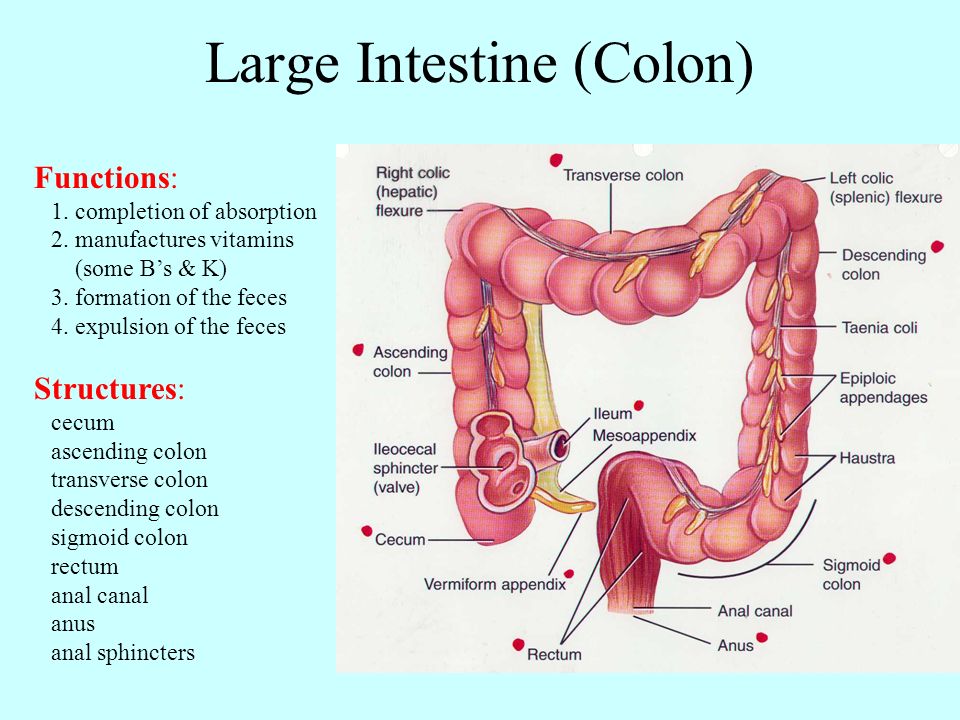
Many patients with neoplastic diseases of the intestine are admitted to the hospital in serious condition, often with complicated forms of the disease. These patients urgently undergo operations, which end with the formation of an intestinal stoma. As a rule, the creation of a stoma allows (in this situation) to prepare the patient for more complex and radical treatment.
In other cases, when performing certain types of elective operations, for example, with a low anterior resection of the rectum for rectal cancer, the formation of a stoma is a necessary condition to reduce the risk of failure of the newly formed connection between two fragments of the intestine and, accordingly, is a measure prevention of the occurrence of intra-abdominal abscesses and peritonitis – serious surgical complications that may result from the failure of the inter-intestinal anastomosis.
Is an intestinal stoma permanent?
Stoma may be temporary or permanent.
Temporary stoma
Temporary stoma is formed to limit the passage of intestinal contents through the intestine, if necessary, to exclude the impact of feces on the anastomosis zone – a surgically formed connection between the two ends of the intestine; or in the event that it is not possible to achieve good preparation of the intestine for surgery (in violation of intestinal patency due to a tumor or adhesions). Also, the formation of a temporary stoma may be required in the staged surgical treatment of patients with Crohn’s disease, familial adenomatous polyposis, when the first stage is the removal of the entire colon or the entire colon together with the rectum with the formation of a J-shaped reservoir; with severe incontinence (anal incontinence).
Also, the formation of a temporary stoma may be required in the staged surgical treatment of patients with Crohn’s disease, familial adenomatous polyposis, when the first stage is the removal of the entire colon or the entire colon together with the rectum with the formation of a J-shaped reservoir; with severe incontinence (anal incontinence).
Surgical treatment of complicated forms of acute diverticulitis (Hartmann operation or operations of the Hartmann type) ends with the formation of a terminal sigmostoma. Subsequently, in the absence of contraindications, it is possible to carry out a reconstructive operation, in which the stoma is removed and intestinal patency is restored.
In case of low rectal resection, the creation of a protective (preventive) stoma is also temporary. At a certain time, after carrying out proctography – a research method confirming the viability of the anastomosis, the stoma is eliminated.
Permanent ostomy
A permanent stoma is most often performed in patients with colorectal cancer when radical surgery is not possible to remove or prevent intestinal obstruction.
In case of radical surgical treatment of cancer of the rectum and cancer of the anal canal with the spread of the tumor process to the sphincter apparatus of the rectum (anal sphincters), the sphincter apparatus is removed along with the tumor. In this situation, the surgeon forms a terminal permanent stoma on the anterior abdominal wall, which is the new unnatural anus (anuspraeternaturalis – lat.).
Whether the stoma will be temporary or permanent depends largely on the underlying disease, as well as on many other factors: the person’s age, concomitant diseases, complications after surgery, anatomical features of the patient. You can get a clear answer about the possibility of eliminating the stoma from your doctor.
How a stoma is formed
The specific localization of the colostomy is determined by the surgeon, taking into account the clinical situation and anatomical features of the patient. In addition, the condition of the outer integument and the abdominal wall must be taken into account – scars and scars greatly complicate the installation of the colostomy bag. An ileostomy is most often located in the right iliac region, a section of the ileum is displayed on the anterior abdominal wall.
An ileostomy is most often located in the right iliac region, a section of the ileum is displayed on the anterior abdominal wall.
Colostomy:
- Ascendostoma cecostoma is located in the right iliac region or right mesogastrium, formed from the ascending, cecum. Intestinal secretions are similar in composition to the small intestine contents.
- Transversostomy can be placed in the right or left hypochondrium, and in the midline of the abdomen above the navel, at the level of the umbilicus to the left or right of it. This type of stoma is formed from the transverse colon. In most patients, there is a release of mushy contents that easily irritate the skin around the stoma.
- Sigmostoma is located in the left iliac region, the sigmoid colon is displayed. According to the sigmostome, the feces are excreted, as a rule, once or twice a day, according to the consistency – semi-formed.
How does a stoma work? Physiology of the stoma
The consistency, color of the stool and the frequency of changing or emptying the bag will differ depending on which part of the intestine was used to form the intestinal stoma.
Small bowel stoma
The contents of the small intestine are liquid and alkaline, therefore, the same in chemical composition and consistency is discharged along the small intestine stoma and is excreted. The alkaline reaction of the discharge of this type of stoma is the reason why there is a strong irritation of the skin – when the contents of the stoma get on it. Prolonged contact of chyme with the skin leads to the formation of non-healing erosions and ulcers on the skin.
When comparing the volume of discharge per day, the daily volume of liquid chyme from small intestinal stomas significantly exceeds the volume of discharge from the colostomy. Due to electrolyte losses in stoma formed on a loop of the small intestine, a significant amount of fluid with a high content of potassium and sodium (so-called blood electrolytes) – most people with a small bowel stoma are prone to dehydration (dehydration) and blood electrolyte imbalance. It is also possible to form kidney and gallbladder stones: when dehydrated, the kidneys reabsorb water from primary urine, thereby producing more concentrated urine.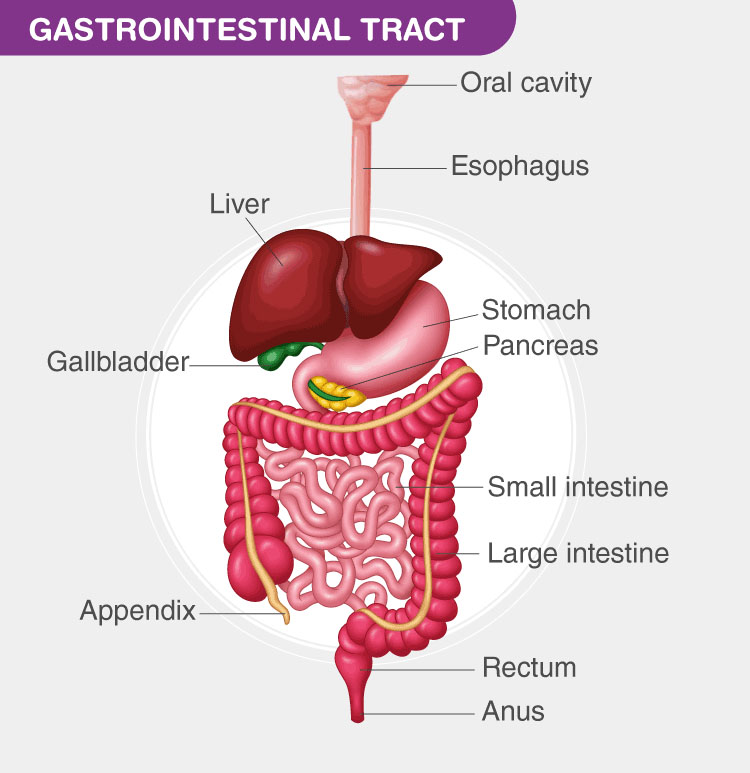 From such concentrated urine, a mineral precipitate can “fall out” and the formation of stones can occur – in the kidneys and other parts of the urinary tract.
From such concentrated urine, a mineral precipitate can “fall out” and the formation of stones can occur – in the kidneys and other parts of the urinary tract.
Stomas of the large intestine (colostomy)
For the process of digestion (fermentation) of food, the large intestine is of relatively little importance, since, with the exception of certain substances, the food is almost completely digested and absorbed already in the small intestine. From the small intestine to the caecum – the initial section of the large intestine – an average of 500-800 ml of liquid content per day enters. In the large intestine, the formation of fecal masses occurs due to the absorption of water, and already fully formed feces enter the sigmoid colon. Thus, the segment of the intestine from which the colostomy is formed will act as an artificial anus. Colostomy discharge has an odor that depends on the quality of the food consumed. The volume and consistency of feces can be adjusted by selecting the appropriate diet, the amount of fluid (juice, water) drunk per day.
What is the preferred diet for an ostomy patient
It is very important that the diet of ostomy patients is balanced and varied, including a wide variety of foods. As a rule, a special diet is not required. After the operation, it is necessary to return to the usual regular diet. It is best to gradually expand the diet, adding one type of product per day, while noting changes in the nature and frequency of stools and draw conclusions accordingly. We must try to eat slowly, often and little by little, chewing food well.
Keep in mind that some foods fix the stool, while others, on the contrary, cause it to loosen. By changing his diet, the patient can adjust the frequency of bowel movements to one or two times a day. A fixing effect is provided by white bread, pasta, mucous soups, rice porridge on the water, butter, boiled meat and fish, hard-boiled eggs, broths, mashed potatoes, black tea, cocoa, some fruits (pear, quince).
Relax: black rye bread, oatmeal, fried meat, fish and lard, raw milk, kefir, curdled milk, sour cream, most vegetables and fruits (cabbage, beets, cucumbers, grapes, apples, plums, figs). Legumes, cabbage, sugar, carbonated drinks contribute to increased gas formation. An unpleasant smell from the colostomy can appear if the patient consumes too many eggs, onions, garlic.
Legumes, cabbage, sugar, carbonated drinks contribute to increased gas formation. An unpleasant smell from the colostomy can appear if the patient consumes too many eggs, onions, garlic.
Will I be able to control my bowel movements if I have a stoma
An intestinal stoma should be considered as an anus (unnatural anus) but located elsewhere, on the abdomen. A feature of the new unnatural anus is the absence of a sphincter apparatus, and hence the function of holding.
Often you will not feel the urge to defecate, feces and gases will pass spontaneously, you will not be able to control this process. However, having received the necessary advice on care and modern colostomy bags, you can cope with this new feature of self-hygiene and everyday life.
Modern colostomy bags compensate for the functions lost after surgery, the contents of the intestine (feces and gases) are reliably isolated in a sealed ostomy bag made of gas-tight materials. The colostomy bags are designed not only to collect feces, but also to protect the skin around the stoma, and are fixed on the skin of the abdomen immediately after the formation of the stoma at the end of the operation.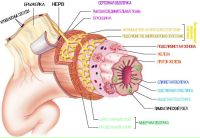 Modern colostomy bags offered by manufacturers are compact, invisible under clothing.
Modern colostomy bags offered by manufacturers are compact, invisible under clothing.
Complications of an intestinal stoma
Peristomal dermatitis (irritation of the skin in the stoma area)
Dermatitis is observed quite often, is the result of mechanical irritation (frequent change of colostomy bags, careless treatment of the skin), or chemical effects of intestinal discharge (leakage under the plate, poorly fitting, leaky colostomy bag).
Manifestations of dermatitis: redness, blisters, cracks, weeping sores on the skin around the stoma. Skin irritation causes itching, burning, and sometimes severe pain. It is possible to develop an allergic skin reaction to devices and products for the care of the stoma. If the allergy is pronounced, then you should stop using glued bags for a while. In such cases, the question of choosing the type of colostomy bag should be decided by the doctor. Often, the cause of skin complications is simply insufficient skin care in the stoma fixation area.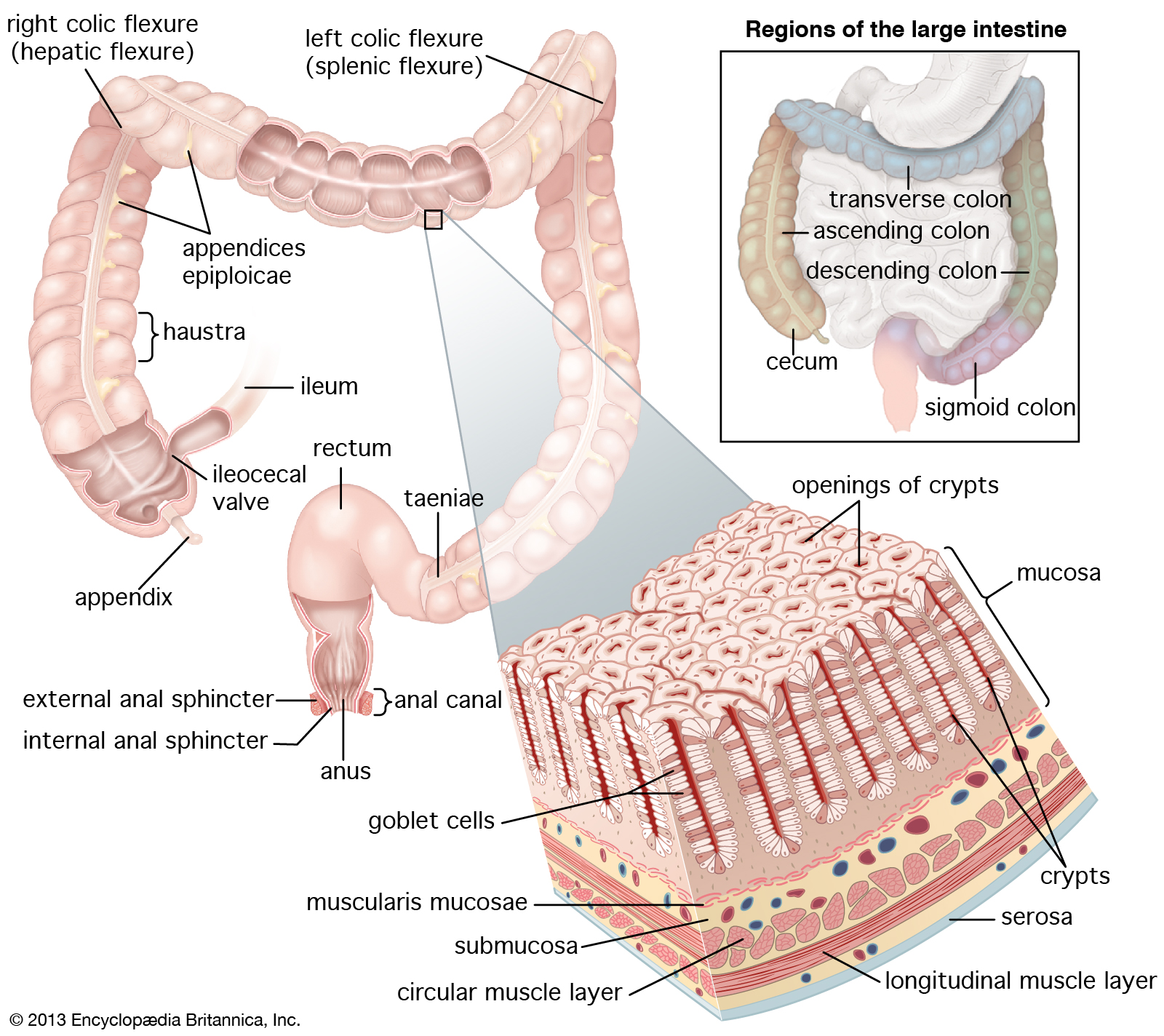 In case of irritation of the skin around the stoma, a consultation with a coloproctologist or specialist in the rehabilitation of stoma patients is necessary.
In case of irritation of the skin around the stoma, a consultation with a coloproctologist or specialist in the rehabilitation of stoma patients is necessary.
Hypergranulations in the stoma area
With frequent dermatitis around the stoma – on the border between the skin and the mucous membrane, polypoid outgrowths are formed that bleed easily. Usually these formations are small, a few millimeters in diameter. If such skin changes occur, consult a doctor.
Small bowel event
Small bowel event – prolapse of small bowel loops into the parastomy wound – occurs when too wide an incision is made to form a stoma. This complication often occurs in restless children who cry a lot in the coming days after the operation, which causes an increase in intra-abdominal pressure and, as a result, the formation of eventration. In adult patients, a prolonged increase in intra-abdominal pressure (persistent cough, repeated vomiting) and a violation of the therapeutic regimen (lifting weights) also leads to eventration. Prolapse of the loops of the small intestine requires emergency surgical assistance.
Prolapse of the loops of the small intestine requires emergency surgical assistance.
Evagination
Evagination – bowel eversion. More often occurs in children. A certain role in the occurrence of this complication can be played by constantly increased intra-abdominal pressure, increased peristaltic activity of the adducting intestine, and an excessively free aponeurosis defect. Evagination may be minor and can be corrected with gentle pressure, but sometimes it is massive, for example, cecostomy is often complicated by ileocecal angle evagination. In most cases, surgical care is not required, but the patient has to constantly adjust the prolapsed intestine.
Stoma stricture
Stoma stricture – narrowing of the stoma outlet. It develops most often with a tendency of tissues (skin) to form keloid scars. Less often, stenosis can be caused by suturing the anterior abdominal wall around the stoma. With this complication, emptying is delayed, and in rare cases, intestinal obstruction may develop. With the gradual formation of a narrowing (stricture) of the stoma outlet, the patient’s struggle with this complication is reduced to a change in diet and the formation of soft feces, which greatly facilitates their passage through the narrowed opening. In the future, it is possible to expand the narrowing by the method of bougienage, by introducing medical items (rubber probe, catheter) into the narrowed opening. It is not always possible to eliminate the stricture in a conservative way (by bougienage), then they resort to an operational aid. During the operation, according to indications, the stoma is eliminated or its reconstruction is performed.
With the gradual formation of a narrowing (stricture) of the stoma outlet, the patient’s struggle with this complication is reduced to a change in diet and the formation of soft feces, which greatly facilitates their passage through the narrowed opening. In the future, it is possible to expand the narrowing by the method of bougienage, by introducing medical items (rubber probe, catheter) into the narrowed opening. It is not always possible to eliminate the stricture in a conservative way (by bougienage), then they resort to an operational aid. During the operation, according to indications, the stoma is eliminated or its reconstruction is performed.
Bloody discharge from the stoma
In most cases, bleeding is caused by damage to the intestinal mucosa due to poor care of the stoma or the use of rough materials. The edge of a tight hole in the plate, the rigid flange of the colostomy bag can also injure the intestine and cause bleeding. Bleeding usually stops spontaneously. But if the bleeding is heavy, you need to see a doctor.
But if the bleeding is heavy, you need to see a doctor.
Retraction (stoma retraction)
This is a gradual dislocation of the stoma below the level of the skin, retraction may be around the entire circumference of the stoma or partial. The presence of a funnel-shaped recess significantly complicates the care of the stoma and requires the use of special colostomy bags with a convex (concave) plate and additional care products (special pastes for leveling the skin surface and protecting it). If these measures are ineffective, surgical treatment (stoma reconstruction) is undertaken.
Parastomal hernias (hernias in the area of stoma formation)
This is a protrusion of the abdominal organs around the stoma due to weakness of the muscular layer of the anterior abdominal wall at the site of stoma formation, often against the background of increased intra-abdominal pressure. The risk of a hernia increases if the patient is obese. Contribute to the formation of hernias – prolonged cough and repeated vomiting in the early postoperative period.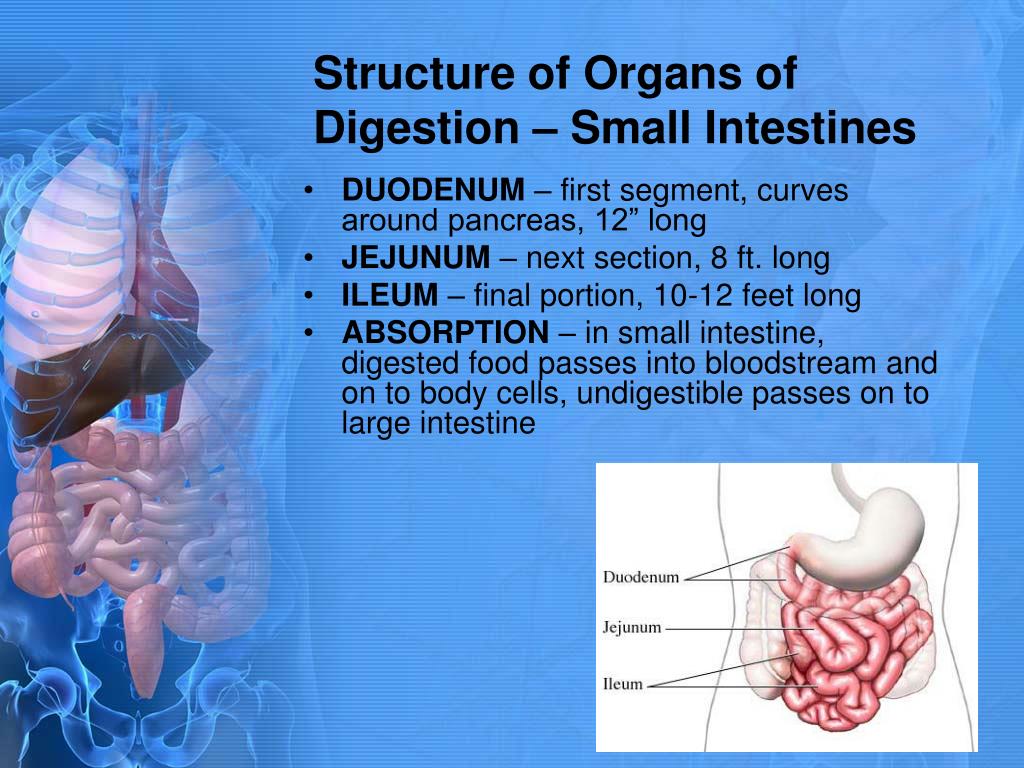 To prevent this complication, elastic bandages are used immediately after the operation. In the future, the bandage is worn for 2-3 months.
To prevent this complication, elastic bandages are used immediately after the operation. In the future, the bandage is worn for 2-3 months.
Patients with even small parastomal hernias may experience pain, constipation, and difficulty using colostomy bags. With infringement of parastomal hernias, only surgical treatment is possible.
Surgical rehabilitation of patients with intestinal stoma
Surgical rehabilitation is an important part of the medical rehabilitation of stoma patients. The timing of reconstructive and reconstructive-restorative operations is determined individually and depends on the initial diagnosis, the type of proposed intervention, the general condition of the patient.
Reconstructive and plastic surgeries are among the most complex in coloproctology and should be performed exclusively by qualified surgeons with special training and sufficient experience for this.
Currently, the restoration of intestinal continuity in the elimination of stoma is one of the urgent tasks of abdominal surgery. Performing reconstructive and restorative operations on the colon is becoming highly relevant for social and labor rehabilitation and improving the quality of life of stoma patients (patients with ileo- or colostomy). This intervention, in terms of technical complexity, sometimes exceeds the primary operation, but at the same time, the methods of surgical correction for the elimination of stoma over the past 10 years have not undergone fundamental changes.
Performing reconstructive and restorative operations on the colon is becoming highly relevant for social and labor rehabilitation and improving the quality of life of stoma patients (patients with ileo- or colostomy). This intervention, in terms of technical complexity, sometimes exceeds the primary operation, but at the same time, the methods of surgical correction for the elimination of stoma over the past 10 years have not undergone fundamental changes.
To date, the exact timing of the restoration of intestinal continuity with stoma has not been determined and, depending on various factors, ranges from 2-3 weeks to 1.5 years. With a double-barreled type of colostomy, a loop of the intestine is isolated from the surrounding tissues, and then an anastomosis is formed from the walls of the intestine.
In patients with a single-barrel end colostomy after Hartmann-type surgery, complex reconstructive surgery is required to restore colonic continuity. The sections of the intestine are connected by the methods “end-to-end” or “side-to-side”. Immediately after the formation of the anastomosis, before suturing the wound of the anterior abdominal wall, it is imperative to check the tightness of the connection by contrast or air test
Immediately after the formation of the anastomosis, before suturing the wound of the anterior abdominal wall, it is imperative to check the tightness of the connection by contrast or air test
The presence of aggravating factors in the form of colostomy and paracolostomy complications complicates the surgeon’s task at the stage of re-intervention. Paracolostomy and ventral hernias, colostomy strictures, ligature fistulas, ostomy evaginations lead to additional infection of the upcoming surgical access.
The KKMC Clinic performs all types of reconstructive and restorative operations on the colon, as well as reconstructive operations in the presence of an ileostomy – with or without parastomal complications.
Good to know
HomeGood to know Good to know
Anxiety, resistance, exhaustion. Medical psychologist NMIC Kristina Kondratyeva – about burnout of medical workers
Views: 70
especially in such a traumatic system for the human psyche as oncology. Permanent
Permanent
interaction with other people in an emergency situation
cancer, inevitably affects doctors and nurses themselves.
More
What is an immune status test and what treatment can be prescribed based on its results?
Viewings: 566
Almost all cancer patients have some kind of immunity disorders, this conclusion was made by oncoimmunologists of the N.N. N.N. Petrov based on the results of research they have been doing since 1997.
More
Why are mutations in the BRCA1 and BRCA2 genes determined? What is the best diagnostic method?
Viewings: 3069
The BRCA1 and BRCA2 genes carry information about proteins that are able to repair DNA double-strand breaks. If one of the genes is damaged by a mutation (the DNA sequence changes), then a non-functioning protein is synthesized in the cells.
More
Hormone dependent breast cancer: diagnosis and treatment
Views: 11942
The most common cancer diagnosis in women worldwide is breast cancer. Every year in Russia this disease is diagnosed in 50 thousand people.
More
What is cancer and how not to miss it? What is cancer and how not to miss it? N. N. Petrova.
More
Triple-negative breast cancer: features of the disease and treatment options two million people.
More
What is cytokine therapy, in what cases is it used?
Viewings: 18155
Aleksey Viktorovich Novik, oncologist, oncoimmunologist, chemotherapist, N. N. N.N. Petrova, candidate of medical sciences
N. N.N. Petrova, candidate of medical sciences
More
Bacteriological examination of urine
Viewings: 4288
Microorganisms that have penetrated into the urine multiply rapidly, and an inflammatory process occurs. If a urinary tract infection (UTI) is suspected, to diagnose and monitor its course, as well as to evaluate the effectiveness of treatment, the patient is offered to conduct a bacteriological study of urine.
More
What does a urinalysis say?
Viewings: 53810
Urinalysis is used not only to detect pathology in the urinary system, but also to assess the state of the body as a whole, using immunological, bacteriological, molecular biological, immunochromatographic and many other research methods. Among the variety of methods, perhaps the most popular is the general analysis of urine.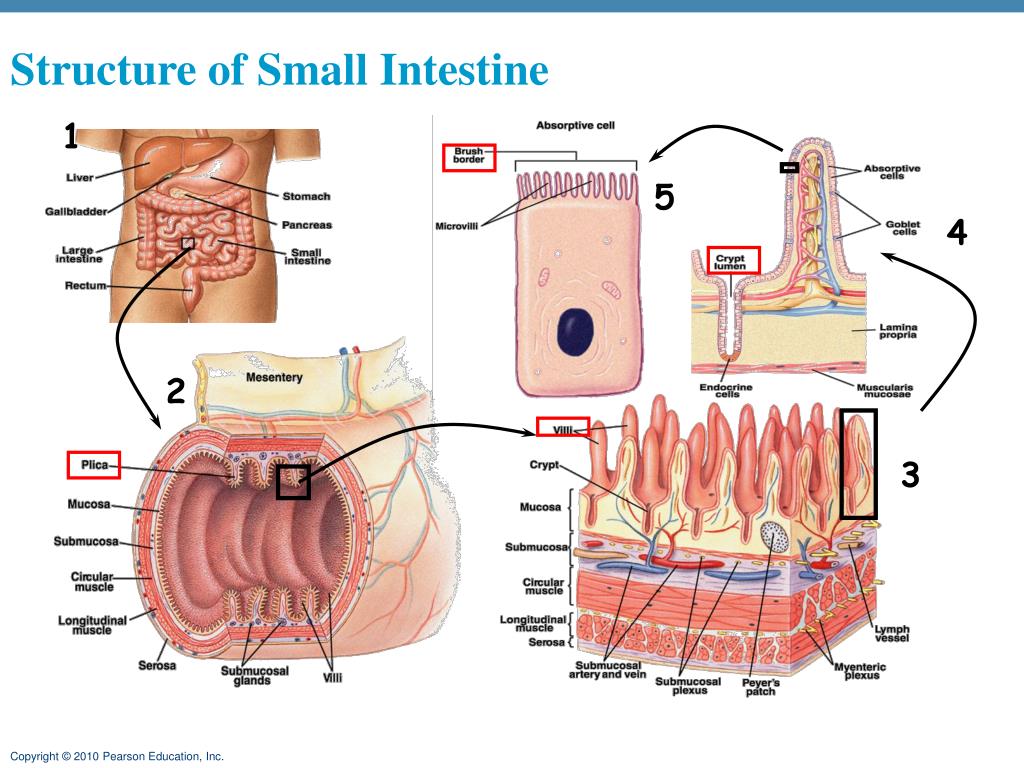
More
Complications of anticancer drug treatment: skin toxicity
Views: 35578
Skin toxicity is the result of the toxic effect of drugs on rapidly dividing cells, which, in addition to tumor cells, also include cells of the skin and its appendages.
More
Skin Cancer: Prevention, Diagnosis, Treatment
Views: 231631
Skin cancer rarely occurs out of nowhere. Precancerous conditions (precursors of cancer) due to a combination of adverse factors can pathologically change, become malignant: actinic keratosis, skin horn, trophic ulcers, keratoacanthoma.
More
What does the general (clinical) blood test say?
Viewings: 65185
Blood tests are perhaps the most frequently performed tests. It is an integral element of any examination, both at the stage of diagnosis and during treatment. What do the indicators of the general blood test mean?
It is an integral element of any examination, both at the stage of diagnosis and during treatment. What do the indicators of the general blood test mean?
More
What does the coagulogram tell about?
Viewings: 17499
This analysis with a hard-to-pronounce name is mandatory for hospitalization in an oncological hospital. What does the coagulogram show, what do the numerous abbreviations mean?
More
Peculiarities of vaccination of cancer patients: recommendations for children and adults
Viewings: 17902
Is it possible to get vaccinated for oncology? Natalya Alexandrovna Efremova, oncologist, researcher at the Scientific Department of Oncoimmunology, N.N. N.N. Petrova, answered a number of important questions about the vaccination of cancer patients.
More
What is a tracheostomy and how can I take care of it at home? Olga Sergeevna Korneeva N. N. Petrova, spoke about the important rules for self-care for a tracheostomy and the tools and devices necessary for this.
N. Petrova, spoke about the important rules for self-care for a tracheostomy and the tools and devices necessary for this.
More
Cancer at a young age: has the incidence increased?
Views: 17351
Let’s find out why this is not so, together with Anna Nikolaevna Malkova, Head of the Information Service and Department of Telemedicine Technologies, N.N. N.N. Petrova
More
Can cancer be cured?
Views: 82380
Can cancer be cured or is it a deadly disease, is it possible to get rid of the diagnosis forever?
More
Protecting a doctor from slander and insult Medical lawyer Natalya Kosolapova told how to punish an offender
Views: 4563
Professional medical activity is connected with constant communication with patients.
